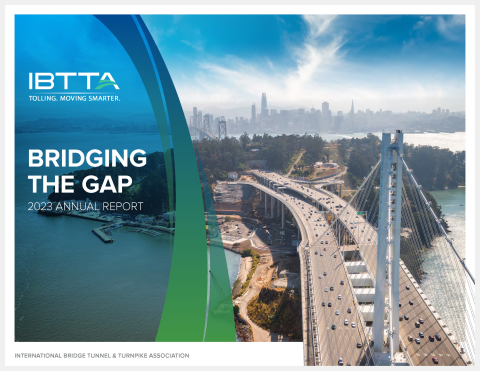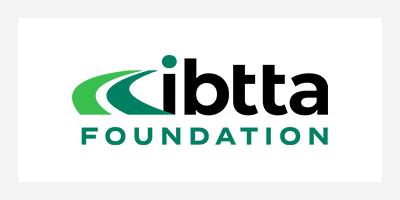- Home
- Creating a Safety Culture In Tolling
Voices
Creating a Safety Culture in Tolling


According to anthropologist James Spradley, “Culture is the acquired knowledge people use to interpret experience and generate behavior." Merriam-Webster defines culture as “a way of thinking, behaving, or working that exists in a place or organization; such as a business.” This rings true when we apply this thinking to safety. In 2019, 40 percent of all occupational fatalities were attributed to transportation incidents, therefore, this article will focus on the critical importance of fostering a real culture of safety in the transportation industry.
The protection of your employees, co-workers, and customers makes clear sense to most conscientious organizations, but creating and committing to a culture of safety is more important and beneficial than many realize. In a time when most companies are struggling with pandemic-related staffing issues, safety measures can reduce injury, absenteeism, and turnover—not to mention the associated costs. When employees work for a business committed to safety, they become committed to it as well. And in the transportation industry where customers are using your roadways, gantries, walk-in centers, and service plazas, well, the supply of accidents waiting to happen is literally endless.
Safety is one of the top priorities at our company, Shimmick, which provides construction services and system and customer service center operations and management to the tolling and transportation industry. We focus on building a strong culture of safety through training, mentorship, personal responsibility, continuous improvement, incentive programs, and more—all of which are designed to safeguard life, property, and the environment.
In December, we reached an incredible safety milestone at our Central Florida Expressway (CFX) Toll Operations project, where we provide toll collection services for this Orlando-based toll agency. The project operates out of 14 locations, with 70 lanes running per day. Our team of 280-plus employees must maintain operations 24 hours a day, seven days a week—a schedule that requires potentially hazardous lane crossings 30 times a day per lane when factoring in shift changes and breaks. Despite these safety challenges, the team reached 5 million hours without a lost-time injury or incident this winter which took over 625,000 man days to achieve.
According to CFX Project Manager Jason Hickey, “Three things must happen to achieve such an unbelievable accomplishment. First, it has to come from the top down, where leadership must personally demonstrate their commitment to safety. Second, everyone must be dedicated to safety protocols and consciously perform them on a daily basis, and not just for themselves but for their colleagues and customers as well. And finally, safety training and awareness must be delivered on a daily, weekly, and monthly basis.”
In developing a true culture of safety, your ability to acquire and transfer safety knowledge to all employees requires total buy-in from everyone within the organization. To truly become part of a company’s culture, safety must be ingrained in every stage of operation and adopted by every employee. It must be a way of life.
Mitigation Is Key
So, what does this mean for a transportation agency with its own office facilities, service plazas, contact centers, walk-in centers, and roadside toll collection equipment? Each one of these areas comes with its own unique set of safety challenges; however, the process to keep everyone safe and minimize incidents is the same.
It all starts with establishing safety policies and procedures with visible engagement and support from senior leadership. A crucial step is to institute an annual safety action plan in which you identify and set your leading and lagging metrics. This is followed by the creation of a training program that focuses on measurable improvement. Training should be a daily occurrence. Something as simple as starting every single meeting or team gathering with a safety tip keeps this focus top-of-mind. Training can be re-enforced with safety awareness posters placed throughout your facilities.
Housekeeping rules such as using handrails on stairwells, removing clutter from hallways and fire or emergency exits, and alerting passersby of unsafe curbs or icy spots in your parking lots or service plazas can go a long way in reducing recordable incidents. While safety is the responsibility of everyone on a project, a designated safety team should be responsible for making these observations and corrections daily.
According to Joel Atchison, vice president of safety at Shimmick, “Mitigation of potential dangers is key. By focusing on reducing your lagging indicators, you can improve the safety of your employees and your valued customers such as trips, slips, and falls at work or where your customers may physically interact with you. These type of accidents account for 84 percent of all non-fatal injuries, with office workers being 2.5 times higher than non-office workers to suffer injuries from a fall. Through our commitment to safety, we have seen a reduction in trips, slips, and falls by 65 percent.”
Following OSHA’s hierarchy of controls will help you reduce your lagging indicators. OSHA suggests that after identifying a safety issue, you first try to eliminate that issue by physically removing the hazard. If you cannot remove the hazard, then you should look to substitute or replace, the hazard with a different solution, such as using slip resistant welcome pads in the lobby of your facilities during or after a rain or snowstorm. If that can’t be done, then you should utilize engineering controls by isolating people away from the hazard. If engineering controls are not a viable option, implement administrative controls to change the way people work around the safety issue, such as requiring the use of handrails. And finally, if none of these controls can be accomplished at the time, then provide personal protective equipment (PPE) to protect workers such as employees wearing hard hats when working on roadside equipment.
Prepared and Proactive
It's important to keep in mind that safety issues don’t always come from accidents. A companywide stretch-and-flex program in which employees participate before the start of every shift will allow you to be better prepared for emergencies and avoid potential injuries. Data from the Bureau of Labor Statistics says that ergonomic injuries account for one out of every three missing workdays, with employees taking more time off, a median of 11 days, from injuries caused by ergonomic problems than other injuries or illnesses. A focus on ergonomics will help an agency avoid soft tissue injuries caused by improper setup of workstations at your call center, offices, or walk-ins. Also, be aware of repetitive tasks such as keystrokes for image review which could lead to issues like carpel tunnel syndrome.
It's important to stay positive when it comes to safety, so everyone becomes and remains engaged. Establish a near-miss or good-catch program to identify major incidents, reward people when they proactively identify potential safety hazards, and correct the hazards. Collecting and analyzing safety data such as incident reports and near-miss reports must be an integral part of your program. Also, the best active safety programs include an employee safety incentive program which rewards individual employees who have spent significant time on the job without an incident resulting in missed work or who have identified workplace hazards that kept their colleagues and customers safe.
Joel concludes, “It is vital to be actively involved in the safety of everyone around you. To accomplish this, a transportation agency must be clear of what is expected from all of their employees when it comes to safety. When this occurs and everyone is collectively looking out for the well-being of each other, a true culture of safety can flourish.”

Joining IBTTA connects you to a global community of transportation professionals, offering unmatched opportunities for networking, knowledge-sharing, and collaborative innovation in the tolling and transportation sector.
Follow IBTTA on social media for real-time updates on transportation trends and collaborative opportunities.





